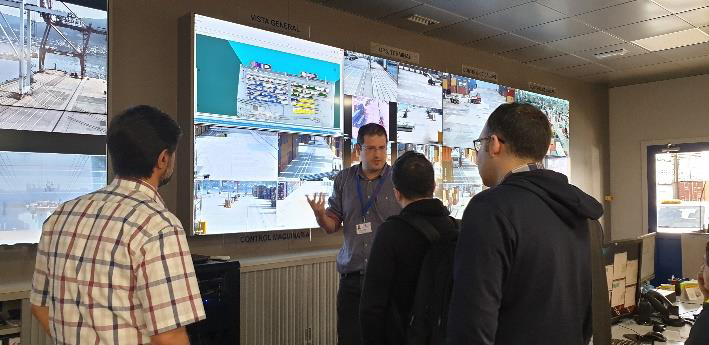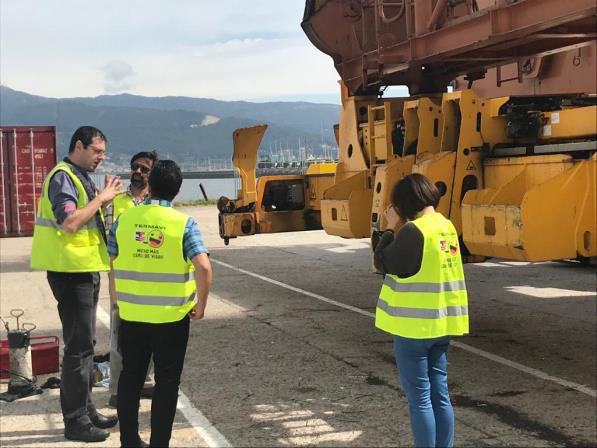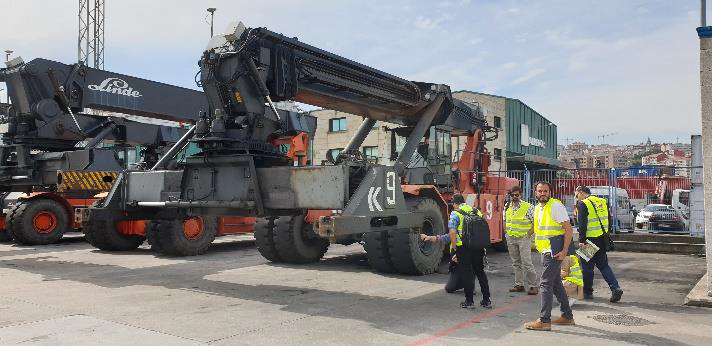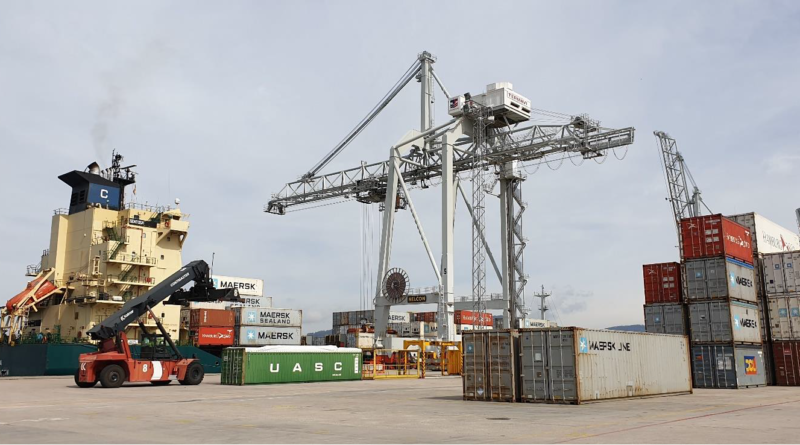Sustainability Analysis performed on the Container Terminal of the Port of Vigo
PortForward Project wants to transform European Ports to a smarter, interconnected and greener system. This will be traduced in implementing technological innovations in port operations management, improving their efficiency, reducing their environmental impacts, boosting socio-economic benefits of Ports and promoting interconnection between Ports and their surrounding area.
One of the main objectives of PortForward Project is to develop a novel, fast and scalable green yard scheduler (GYS) model for port operations, as a core element of the Decision Support System (DSS) developed within the project. Brunel University (UK) is the partner in charge of the development of the GYS. This module will be focused on improving efficiency of port operations and consequently, the environmental performance of port operations and the trade-offs involved within economic and operational objectives.

For the development of the GYS it is needed, first, to quantify a set of environmental parameters such as fuel and energy consumption of different port operations and their associated emissions. LEITAT, a Spanish Technological Centre, is the responsible partner of quantifying and providing these environmental parameters and their associated impacts, by analysing the sustainability of port operations. The analysis of the sustainability of port operations is being conducted by applying the Life Cycle Assessment (LCA) methodology, a well stablished, recognized and standardized methodology by ISO standards (14040 and 14044). An initial environmental and socio-economic analysis of port operations are being performed since the end of 2018 in order to identify the most critical port operations, that will be those that needed more attention during the development of the GYS. After the development of the GYS, the recommended / improved scenarios will be also analysed, in order the quantify the environmental and socio-economic benefits thanks to the application of the GYS model.

Until now, the sustainability analysis of the business as usual case (current case) has been focused on conducting first the environmental analysis of the port operations. To do this, the use case of the Container Terminal of the Port of Vigo has been selected for the analysis. Inventory data about machinery used, energy consumption, fuel consumption, container movements, vessels and cranes operations, etc. have been collected by the collaboration of Vigo’s Port Authority (APV). Moreover, different visits have been conducted during 2018 and 2019 in the Container Terminal of the Port of Vigo, in order to know and explore the different operations. The operation and maintenance stages of the three main groups of operations have been considered in the environmental analysis:
- The Yard Cranes, including vessels berthing operations and off-loading and loading operations, and crain operations.
- The Storage Yard, including container movements by using transtainers and/or reachstackers. Also, in this compartment it is included the energy consumed by refrigerated containers and the water use for the cleaning operations of containers, despite at this moment, both concepts are not analysed yet due to lack of inventory data provision.
- The movement of vehicles (MV), considering both internal and external movement of trucks and vehicles.
The preliminary results obtained from the study have concluded that berthing and loading/off-loading vessels operations contributes with the highest environmental impacts, in the Container Terminal, due to the fuel consumed during berthing and loading/off-loading time (carbon footprint of 21.308 Kg CO2 eq./TEU). Secondly, the movement of vehicles contributes also with very high environmental impacts (carbon footprint of 14.161 Kg CO2 eq./TEU). The use of transtainers (carbon footprint of 4.584 Kg CO2 eq./TEU) and reachstackers (carbon footprint of 4.048 Kg CO2 eq./TEU) generates also important and similar environmental impacts, due to the fuel consumed during their use. Finally, cranes have the lowest environmental impact contributions (carbon footprint of 1.448 kg CO2 eq./TEU) among the Container Terminal operations studied. Other environmental impact indicators such as: influence on ozone depletion, generation of particulate matter, eutrophication of water ecosystems, water footprint, energy demand, etc. have been analysed, and the distribution of environmental impact contributions among the different port operations analysed are also the same.
The preliminary environmental analysis and results explained gives an overview about the most critical container port operations in terms of environmental impacts. This is especially relevant for the GYS development, to focus efforts on one or another port operation, and to propose improvement measures and scenarios for the management of the container terminal operations efficiently. The project will finish on January 2020 and during this time, more efforts will be applied in the development of the GYS and on the sustainability analysis of the project. Results of the project could be extrapolated to other Ports and will allow to achieve more sustainable Ports in the future.


